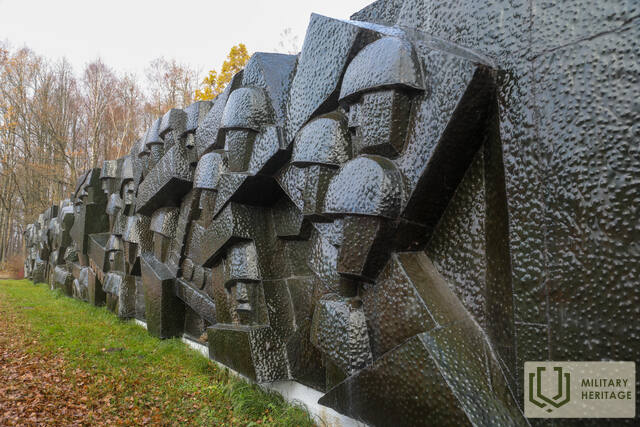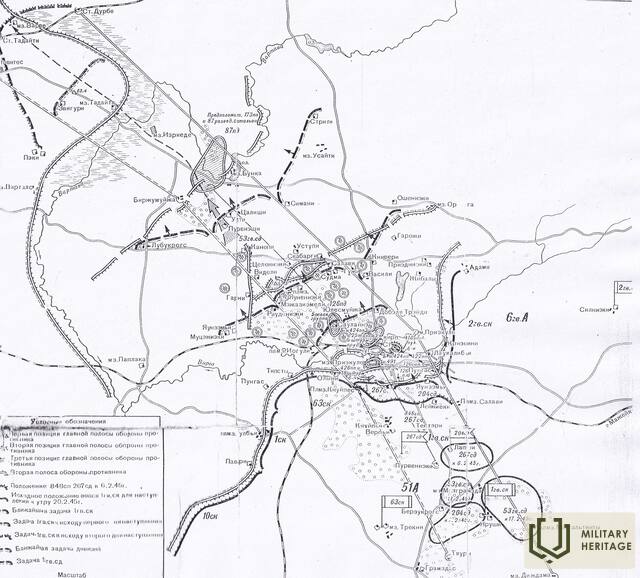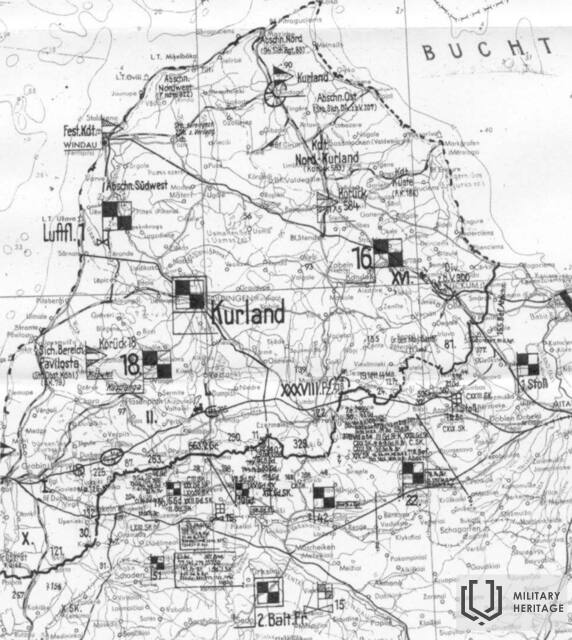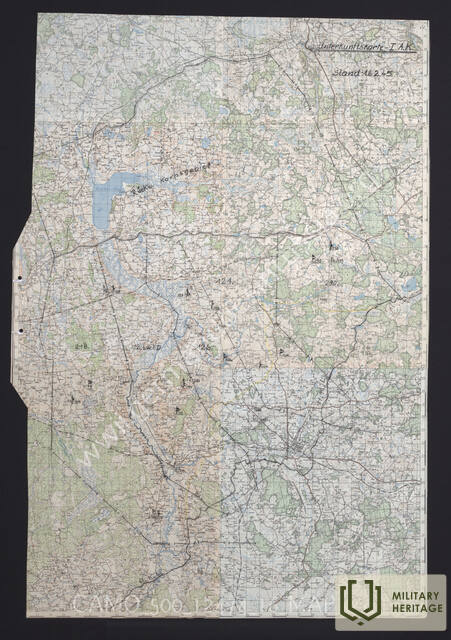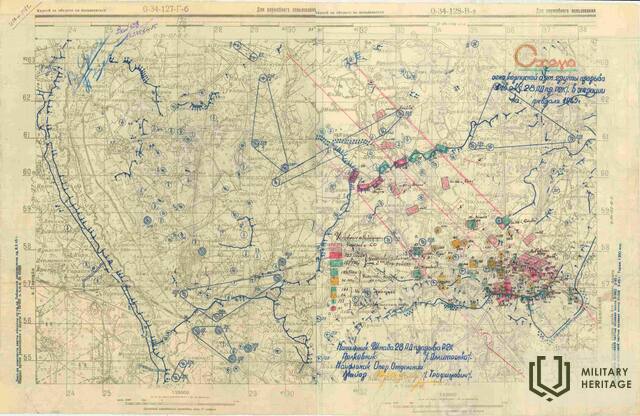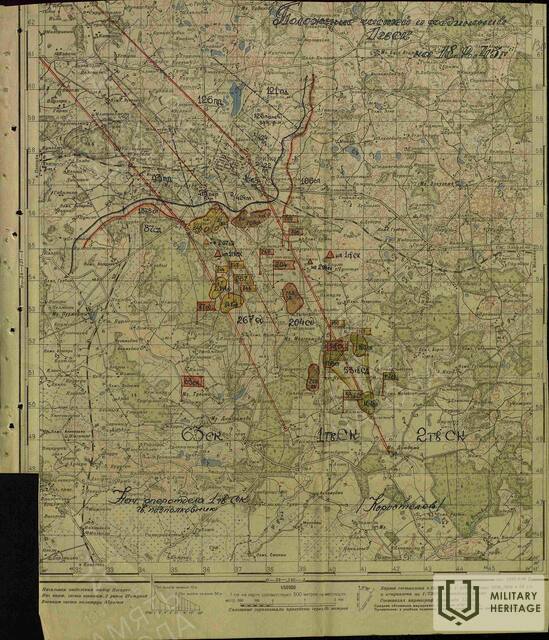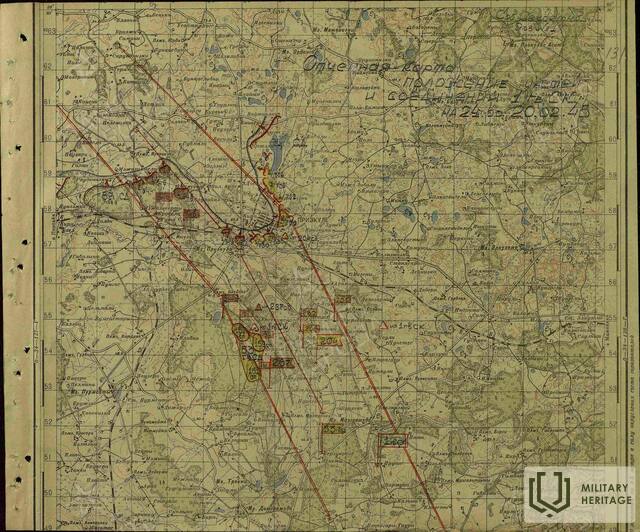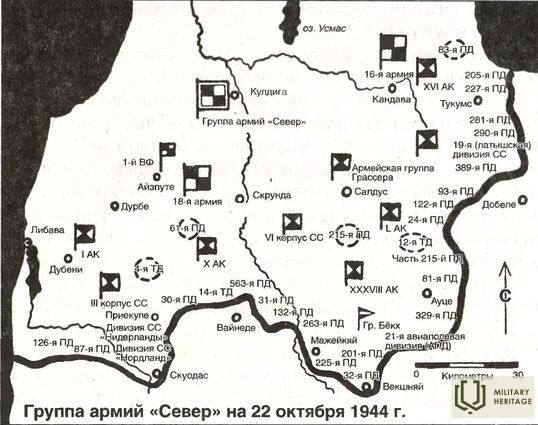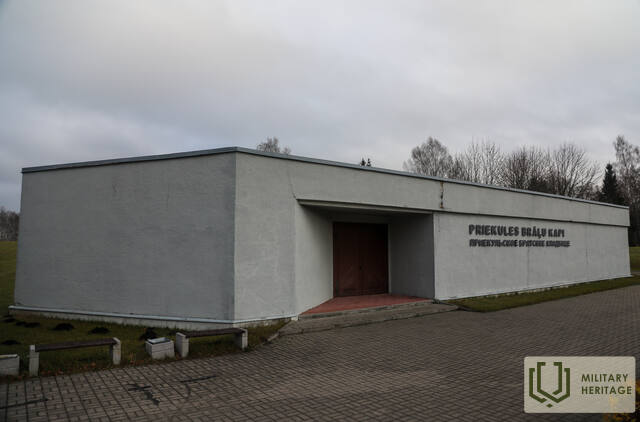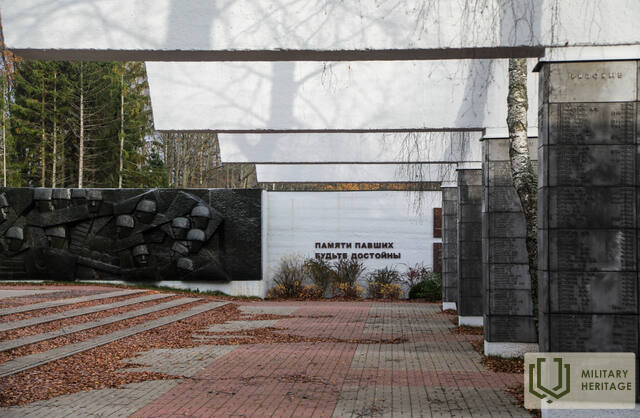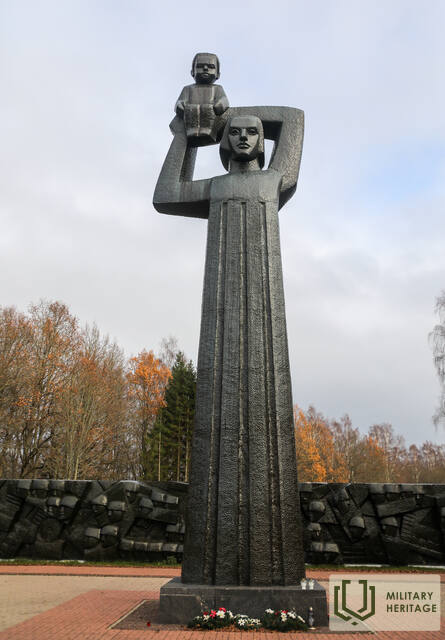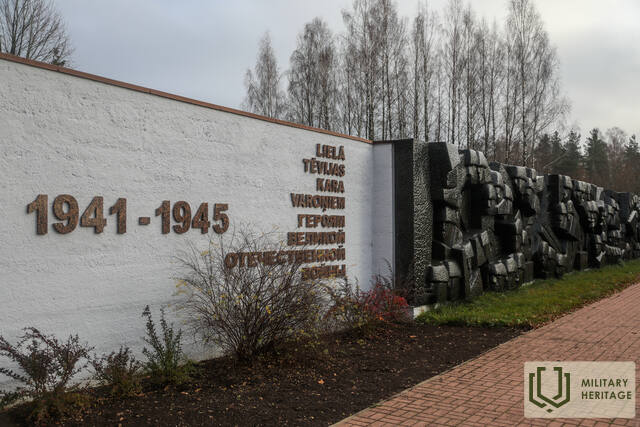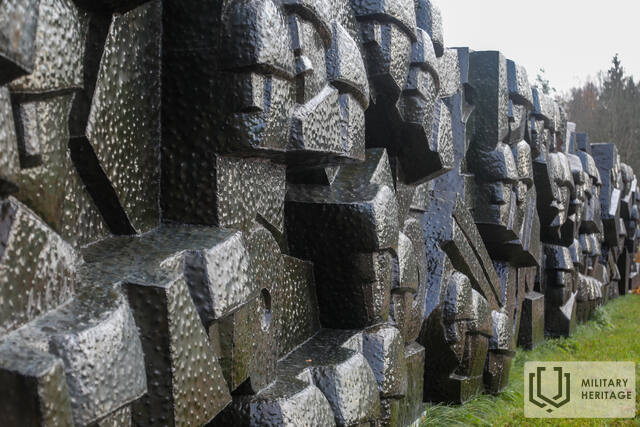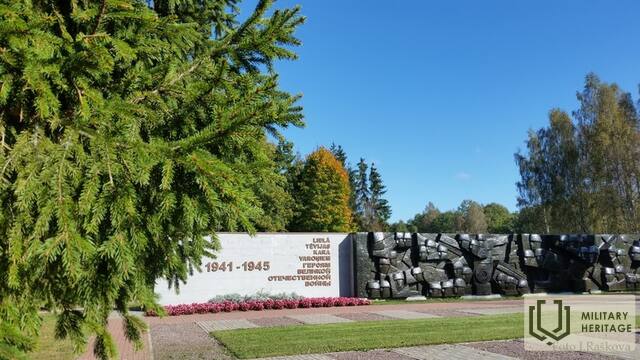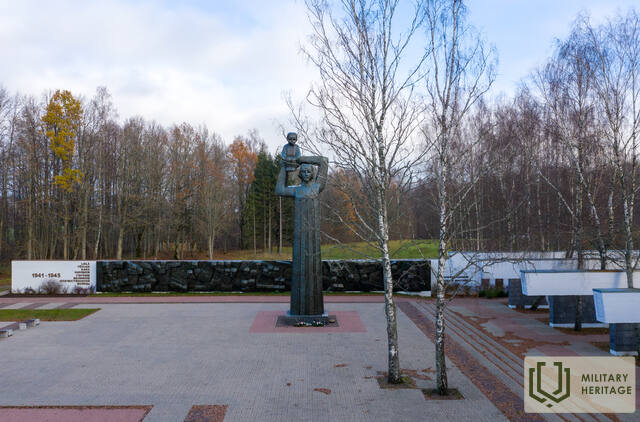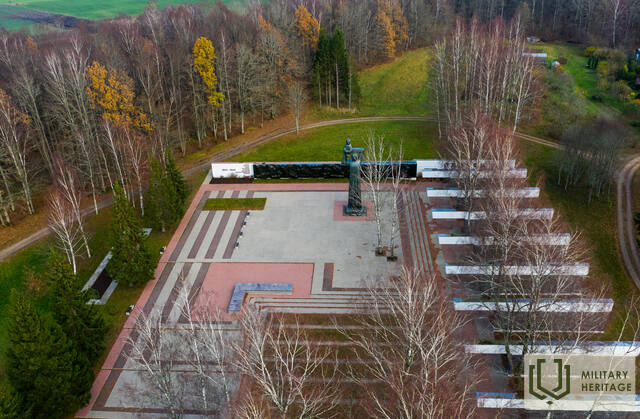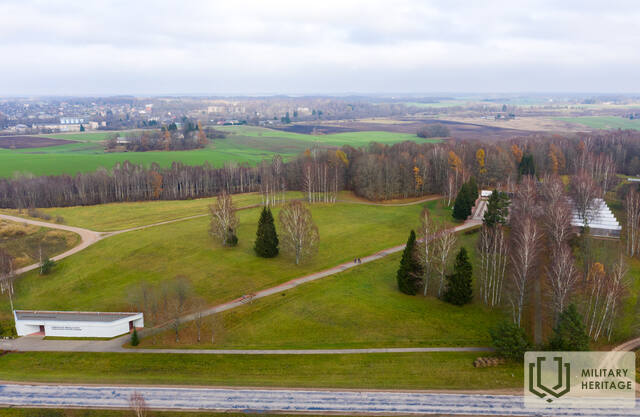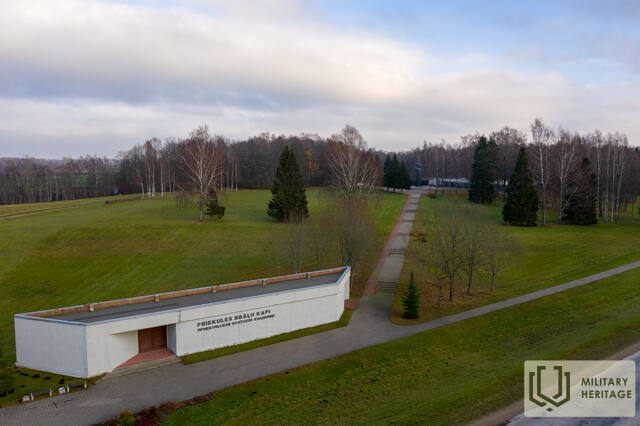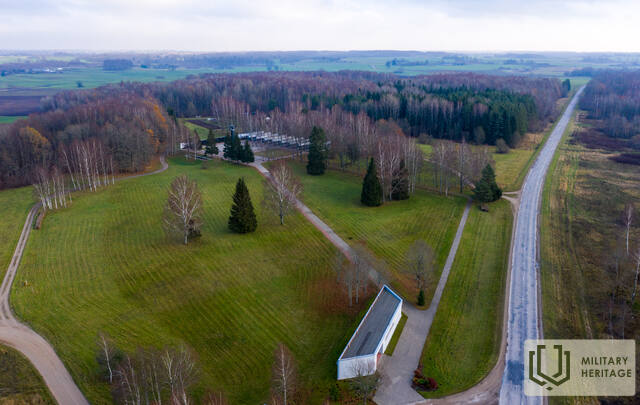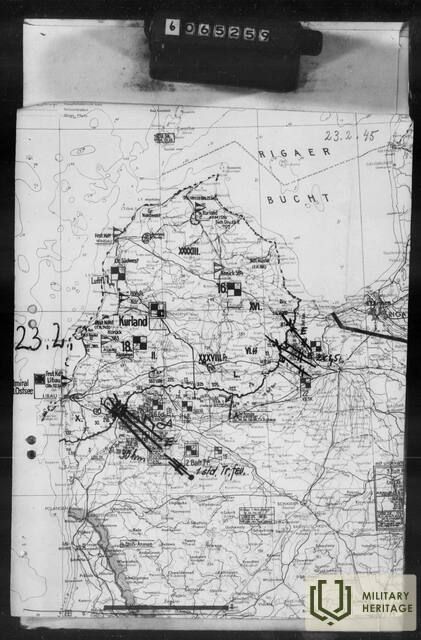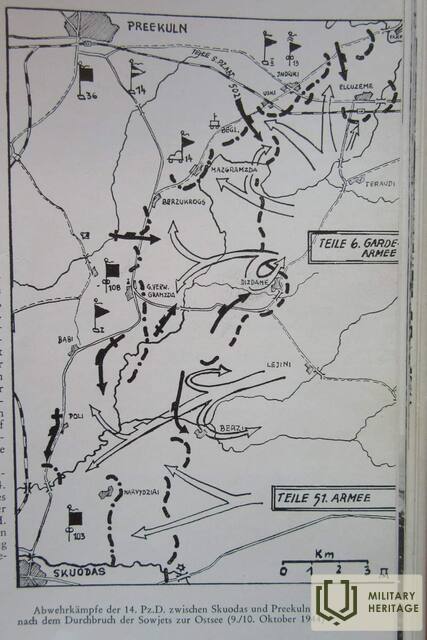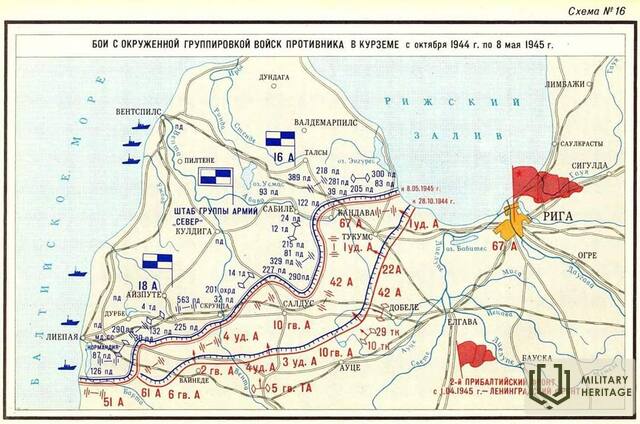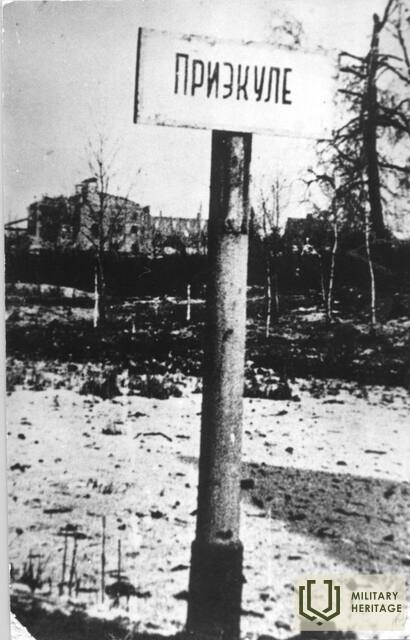Priekule Memorial Ensemble of Warrior’s Cemetery
Memorialinis vieta

The Priekule Memorial Ensemble of Warrior’s Cemetery is on the Liepāja-Priekule-Skoda road and is the largest burial site of Soviet soldiers of World War II in the Baltics. More than 23,000 Soviet soldiers are buried here. Operation Priekule was one of the fiercest battles in Kurzeme Fortress that took place from October 1944 to 21 February 1945. The Battle of Priekule in February 1945 lasted seven days and nights without interruption and had a lot of casualties on both sides. Until Priekule Warrior’s Cemetery was transformed into a memorial, the last monument of the outstanding Latvian sculptor K. Zāle (1888-1942) was located here to commemorate the independence battles in Aloja. Between 1974 and 1984, the 8 ha Priekule Warrior’s Cemetery was transformed into a memorial ensemble dedicated to those who fell in World War II. It was designed by the sculptor P. Zaļkalne, architects A. Zoldners and E. Salguss, and the dendrologist A. Lasis.
The centre of the memorial holds a 12 m tall statue called the ‘Motherland’, and names of the fallen are engraved on granite slabs. Until Latvia regained its independence, the Victory Day was widely celebrated every year on May 9.
Panaudoti šaltiniai ir literatūra:
www.leismalite.lv
Susijusi laiko juosta
Susijusios temos
Susijusi istorija
19-metės Raisos Ahmedejevos istorija apie žvalgybinį mūšį 1945 metų vasario 14 dieną prie Priekulės
Baškirų kilmės Raudonosios armijos kario Raiso Ahmadejevo (19 m.) pasakojimas apie sovietų armijos pasirengimą Priekulės puolimui ir žvalgybiniam mūšiui Piekulėje 1945 m. vasario 14 d.
19-mečio Alfonso Volgemuto pasakojimas apie žvalgybinį mūšį 1945 metų vasario 17 dieną prie Priekulės
Alfonsas Volgemutas buvo 19 metų vaikinas, radijo operatorius ir tarnavo nacistinės Vokietijos armijoje.
"Iš šios operacijos niekas negrįžo ir nėra žinoma, ar yra išgyvenusių. Aš pats dalyvavau tame kare būdamas 19-metis radistas ir esu vienas iš 2, vėliau 3 išgyvenusiųjų, kurie pateko į rusų nelaisvę. Noriu įvykius atspindėti iš savo patirties."
„Karas nesibaigia, kol nebus palaidotas paskutinis kareivis“ (Saldus vokiečių karių kapinės)
1944 m. spalio 10 d. Kuržemė iškilo kaip atskiras ir išskirtinis mūšio laukas. Apsupta buvo laikoma apie 500 000 vokiečių karių. Remiantis 1-ojo Baltijos fronto štabo pranešimais, norint visiškai išlaisvinti visą Baltijos pakrantę, prireikė tik „nedidelių pastangų“. Tačiau kovos Kurlande tęsėsi dar septynis mėnesius ir Kurlandas tapo Antrojo pasaulinio karo pabaigos simboliu.
Per septynis mūšio mėnesius iki 1945 m. gegužės vokiečių pajėgos Kuržemėje prarado 154 108 žuvusius, sužeistus ir dingusius be žinios karius. Nuo 1997 metų vyksta Karo kapinių apžiūra ir karių perlaidojimas prie Saldus ir šiuo metu čia galima rasti 27 000 žuvusių karių pavardžių.
„Karas nesibaigia, kol nebus palaidotas paskutinis karys“ (Priekulės brolių kapinės)
1944 m. spalio 10 d. Kurša iškilo kaip atskiras ir savitas mūšio laukas. Buvo laikoma, kad apie 500 000 vokiečių karių buvo apsupti. Remiantis 1-ojo Baltijos fronto štabo pranešimais, norint visiškai išlaisvinti visą Baltijos pakrantę, prireikė tik „nedidelių pastangų“. Tačiau kovos Kuršoje tęsėsi dar septynis mėnesius ir Kurša tapo Antrojo pasaulinio karo pabaigos simboliu.
Per septynis mūšio mėnesius iki 1945 m. gegužės Vokietijos ginkluotosios pajėgos Kuržemėje neteko 154 108 žuvusių, sužeistų ir dingusių be žinios karių, o Raudonosios armijos nuostoliai buvo apie 400 000 žuvusių, sužeistų arba dingusių be žinios.




